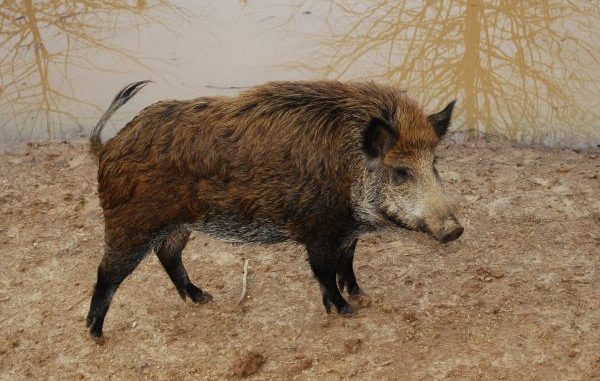
This New Orleans chef has found a way to combine his love of the outdoors, his passion for cooking and taste for pork. Here’s how he got there and some recipes for wild hog.
Last month, we left Chef Mark Falgoust and Bill Borges, president of New Orleans Fish House, admiring the impressive tusks of a wild boar Falgoust had just shot.
Falgoust was planning to use this pig to demonstrate how Louisiana hunters can turn a threat into a treat. So he soon moved from assessing the animal’s ivory tushes to assessing the animal as table fare.
“We are going to eat everything but the squeal,” he noted. “I find that females tend to be a little more tender than males because they have more intramuscular fat. But males don’t have to be castrated to be good; I’ve eaten a lot of males that tasted good. Where the animal grows up and what it eats are most important.
“Old forest or hardwood forest hogs are best. The ones from pine forests are drier; they have less fat. Water can affect taste, too. Animals from marsh habitats have a stronger taste. And young hogs are tenderer and milder in taste than old hogs.
“Hunters should expect wild hogs, all in all, to have more dimensions of flavor. They haven’t eaten the same food all their lives. But they are all delicious — any size.”
Falgoust finds himself in the peculiar position of being the executive chef of Grand Isle Restaurant in New Orleans, a fine-dining establishment specializing in seafood, and at the same time being a food nut who loves the taste of swine.

“I like seafood, but I love pigs,” he said, brown eyes sparkling.
And he has been successful at incorporating pork items into the restaurant’s seafood theme without displacing seafood. The restaurant serves a “charcuterie selection” on a hog-shaped wooden cutting board that includes fennel salami, saucisson salami, lonzino cured pork loin and hog’s head cheese, garnished with house-made pepper jelly, pickled peppers, cornichons, white cheddar cheese and Creole mustard.
All the meats are made by Falgoust in the restaurant kitchen.
House-made pork products are also made in the restaurant to use with seafood dishes, including four types of salami, pancetta and house-made ham — the latter which Falgoust proudly calls “my bread and butter.”
Falgoust had his work cut out with the hog before him on this day. Although, not a huge animal, it was a male; it was old; it was leaner than most deer; and it was tough. In fact, he later called it the toughest hog he ever cooked.
But, while working with the meat, he shared some recipes, and how he has combined his love of the outdoors, cooking and his love of all things pork.


